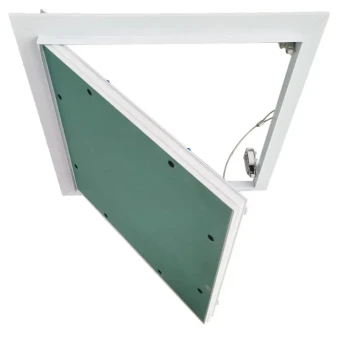Nov . 10, 2024 08:19 Back to list
Ceiling Access Panel Specifications and Compliance Guidelines for Construction Projects
Ceiling Access Panel Requirements An Overview
Ceiling access panels play a crucial role in the functionality and safety of various buildings, whether residential, commercial, or industrial. Designed to provide access to concealed spaces—like plumbing, electrical wiring, or HVAC systems—these panels ensure that maintenance and repairs can be conducted efficiently, without disrupting the overall integrity of the ceiling. Understanding the requirements and standards for ceiling access panels is essential for architects, builders, and property managers alike.
Purpose and Importance of Access Panels
Access panels are designed to provide entry to areas that require regular maintenance while ensuring minimal disruption to the surrounding structure. For example, in commercial settings, access to ductwork for HVAC systems is critical for ensuring air quality and system efficiency. Furthermore, they allow technicians to reach critical components without the need for extensive demolition work, thus saving time and costs associated with repairs.
Types of Access Panels
When considering ceiling access panels, it is essential to recognize the various types available. These can range from simple hinge-style panels to more sophisticated lockable options for heightened security. Additionally, panels can be made from various materials such as plastic, metal, or drywall, each catering to different aesthetic preferences or functional requirements.
1. Drywall Access Panels These are often used in residential settings, providing a seamless finish that matches the surrounding drywall. They are typically painted over to blend into the ceiling, which is ideal for areas where aesthetics are a priority.
2. Metal Access Panels Generally found in commercial or industrial applications, metal panels offer greater durability and security. They can be lockable and are resistant to impact and wear, making them suitable for high-traffic areas.
3. Plastic Access Panels Lightweight and easy to install, plastic panels are often used in areas where moisture might be a concern, such as bathrooms or kitchens.
Building Codes and Compliance
Complying with local building codes and regulations is paramount when installing ceiling access panels. These regulations ensure that the panels not only provide access but also maintain the structural integrity of the ceiling and meet fire safety standards. Some critical requirements may include
ceiling access panel requirements

- Size and Placement Access panels must be of adequate size to facilitate easy access to the concealed area. The locations should also be chosen carefully to avoid any obstructions and should adhere to any specified distances from lights or other fixtures.
- Fire Rating In certain commercial buildings or areas where fire safety regulations are stringent, access panels must have a specific fire rating to prevent flames from spreading through concealed spaces.
- Load Requirements Depending on the ceiling structure, panels must be capable of supporting certain loads, especially in commercial settings where maintenance personnel may need to step onto the ceiling to conduct repairs.
Installation Guidelines
Proper installation of ceiling access panels is crucial for maintaining functionality and safety. A few key guidelines include
- Aligning with Structural Elements Panels should be installed aligned with the structural framing for support. This avoids sagging or detachment over time.
- Sealing and Insulation To maintain energy efficiency and prevent air leaks, access panels should be properly sealed and insulated, particularly in spaces that require temperature control.
- Regular Maintenance Checks Once installed, it is important to periodically inspect access panels for any signs of wear, damage, or misalignment. This ensures that they continue to function correctly and that the systems they are hiding remain accessible.
Conclusion
Ceiling access panels are an indispensable element of modern building design. By understanding their requirements—including types, compliance with building codes, and installation guidelines—construction professionals can ensure that these panels serve their purpose effectively. Whether in a home, office, or industrial setting, well-placed and properly constructed access panels provide the critical linkage between maintenance staff and the essential systems that keep buildings operational and safe.
-
Durable Ceiling T Grid Systems | Easy InstallationNewsAug.29,2025
-
PVC Gypsum Ceiling: Durable, Laminated Tiles for Modern SpacesNewsAug.28,2025
-
Pvc Gypsum Ceiling Is DurableNewsAug.21,2025
-
Mineral Fiber Board Is DurableNewsAug.21,2025
-
Ceiling Tile Clip Reusable DesignNewsAug.21,2025
-
Ceiling T Grid Modular DesignNewsAug.21,2025







